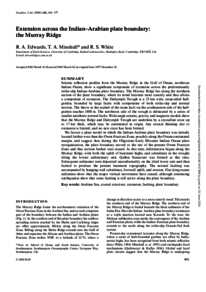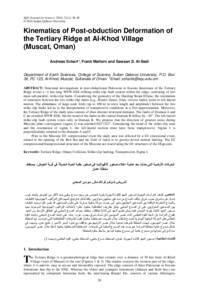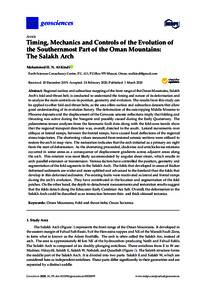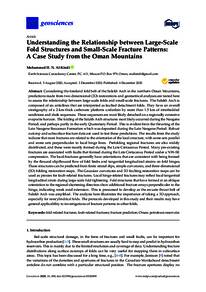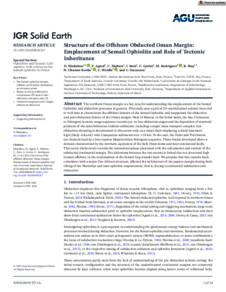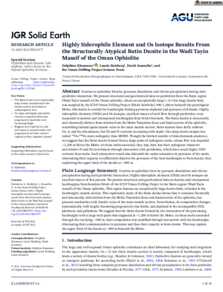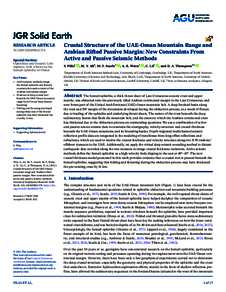وثيقة
Extension across the Indian-Arabian plate boundary : the Murray ridge.
المعرف
DOI: 10.1046/j.1365-246X.2000.00163.x
المصدر
Geophysical Journal International. v. 142, 2, p. 461-477
المساهمون
Minshull, T. A. , مؤلف
White, R. S. , مؤلف
الدولة
United States.
مكان النشر
Guadalupe
الناشر
RAS.LLC
ميلادي
2000-08-01
اللغة
الأنجليزية
الملخص الإنجليزي
Seismic reflection profiles from the Murray Ridge in the Gulf of Oman, northwest Indian Ocean, show a significant component of extension across the predominantly strike-slip Indian-Arabian plate boundary. The Murray Ridge lies along the northern section of the plate boundary, where its trend becomes more easterly and thus allows a component of extension. The Dalrymple Trough is a 25 km wide, steep-sided half-graben, bounded by large faults with components of both strike-slip and normal motion. The throw at the seabed of the main fault on the southeastern side of the half-graben reaches 1800 m. The northwest side of the trough is delineated by a series of smaller antithetic normal faults. Wide-angle seismic, gravity and magnetic models show that the Murray Ridge and Dalrymple Trough are underlain by a crystalline crust up to 17 km thick, which may be continental in origin. Any crustal thinning due to extension is limited, and no new crust has been formed. We favour a plate model in which the Indian-Arabian plate boundary was initially located further west than the Owen Fracture Zone, possibly along the Oman continental margin, and suggest that during the Oligocene-Early Miocene Indian Ocean plate reorganization, the plate boundary moved to the site of the present Owen Fracture Zone and that motion further west ceased. At this time, deformation began along the Murray Ridge, with both the uplift of basement highs, and subsidence in the troughs tilting the lowest sedimentary unit. Qalhat Seamount was formed at this time. Subsequent sediments were deposited unconformably on the tilted lower unit and then faulted to produce the present basement topography. The normal faulting was accompanied by hanging-wall subsidence, footwall uplift, and erosion. Flat-lying recent sediments show that the major vertical movements have ceased, although continuing earthquakes show that some faulting is still active along the plate boundary.
ISSN
0956-540X
قالب العنصر
مقالات الدوريات

